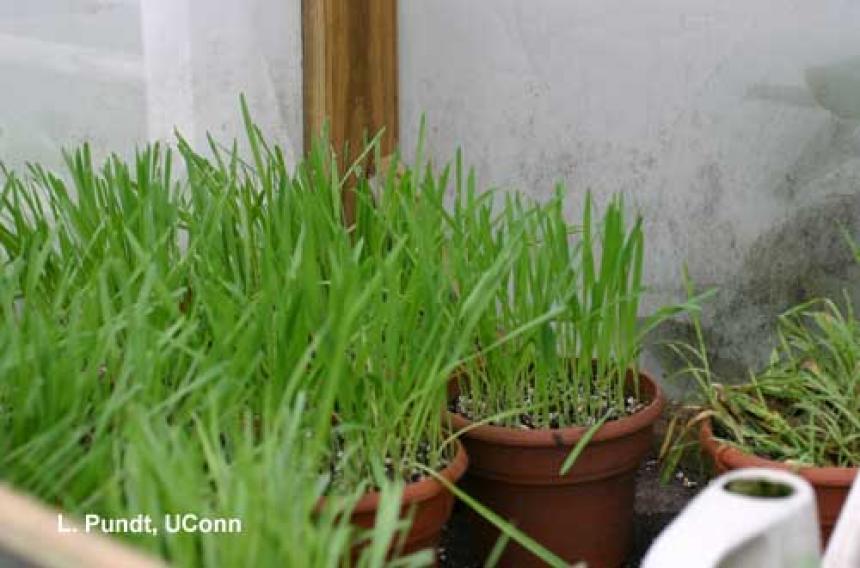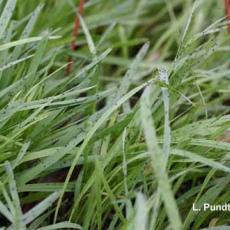Aphid banker plants are containers with winter barley or common rye or oats on which colonies of grass-feeding aphid species such as the corn-leaf aphid (Rhopalosiphum maidis), greenbug (Schizaphisgraminum), and/or bird-cherry aphid (Rhopalosiphum padi) are established. Banker plants are primarily used to rear prey or hosts, in order to attempt to have a sufficient population of continually reproducing natural enemies.
- Place orders for banker plants up to 6 weeks before aphids are expected in your greenhouse.
- Transplant the plugs into larger sized pots (10 inch) so that the grass plants have plenty of room to grow.
- Wait one or two weeks for grass feeding aphid populations to grow.
- Lightly release the “aphid mummies” or Aphidius colemani adults onto the starter banker plants. For example, 100 hundred Aphidius per banker plant before it is divided and repotted. Aphidius colemani attacks the grass-feeding aphid, which is not an aphid pest of most greenhouse-grown crops
- Check banker plants weekly and look for newly parasitized aphids (“aphid mummies”), which indicate that the parasitoids are establishing on the banker plants.
- Start new banker plants on a regular basis because they will decline and die within a few weeks.
- Inoculate new banker plants by physically transferring aphids from old banker plants onto new ones every 2-3 weeks.
It may be necessary to “protect” or isolate your replacement banker plants from natural enemies (either established in your greenhouse or naturally occurring natural enemies that may enter the greenhouse from outdoors during warmer weather). If so, place banker plants in “starter cages” so you can build up your population of grass feeding aphids before releasing A. colemanii.

